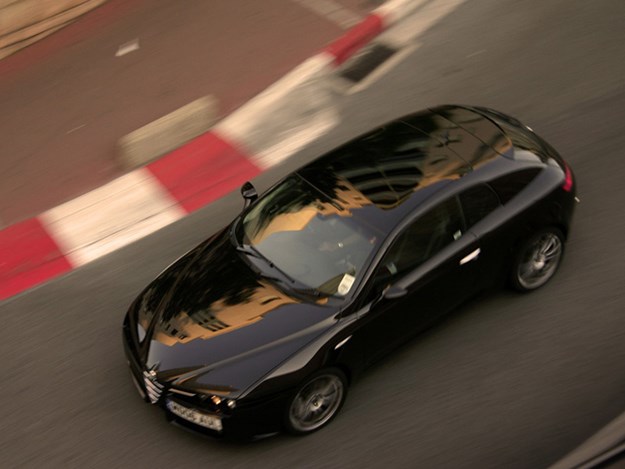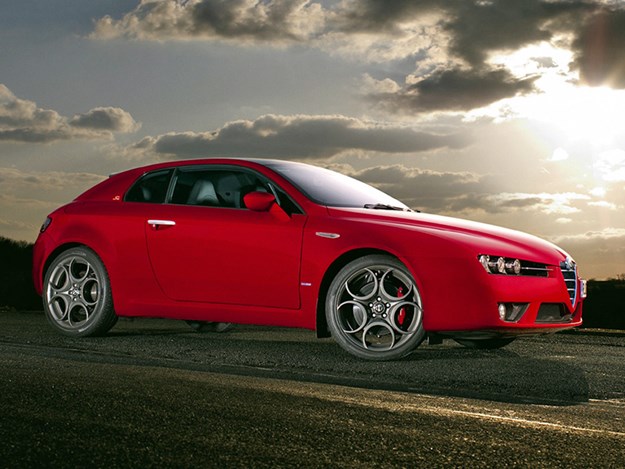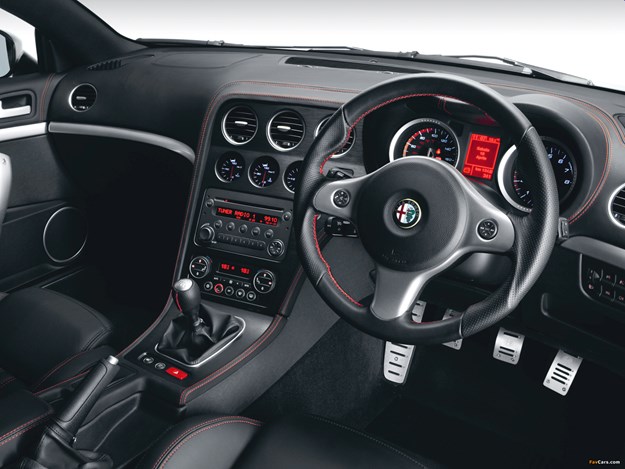Alfa Romeo Brera V6 - Buyer's Guide



|
Designed in Italy by Giugiaro and powered by an engine from Port Melbourne
Want a totally European car with links to the beloved Australian name of Holden? Here’s one.
V6 versions of the Alfa Romeo Brera used engine blocks that were supplied by the GM-H engine plant in Melbourne, sent to Italy for installation into a body penned by styling legend Giorgetto Giugiaro then shipped back to us.
Strange name? Quirky car? Very definitely. Brera is a district of Milan; a city steeped in Alfa Romeo heritage and renowned for its artistic and creative inhabitants. It also translates as ‘barren’ or ‘bare’ which this Alfa certainly isn’t.

In the manner of so many Alfa Romeos, the shape was first seen as a show car that provided inspiration for a production model. It isn’t sleek and svelte like earlier Alfas of its ilk and differed only slightly in mechanical format from the GTV it replaced. But as a repackaging job it is still exemplary.
The basic Brera engine was a 2.2-litre four cylinder with 136kW. However, the one to look for and which will see enthusiastic owners wearing a grin wider than the Brera’s broad bonnet is the V6.
With 191kW, this engine driving via the front wheels alone would tax the talents and snap the wrists of most drivers, so Alfa added to the package its Q4 all-wheel drive system. With a centre differential that fires more torque rearwards than is sent to the front wheels, the V6 Brera avoids the problem of power-on understeer and minimises torque steer when accelerating hard.

All of this technology, plus the equipment needed to justify a new car cost of $90,000, does of course add weight and 1650kg is a lot for a car of this size.
Overcoming inertia is a challenge, so 0-100km/h takes a stodgy 7 seconds. From there on though, the Alfa enters supercar territory and mid-range acceleration is brutally rapid.
If you’re someone for whom size is important, the truncated Brera probably won’t make the list. It comes with four seats but the buckets in the back are best suited to a couple of youngish kids. Not even a fun place for the dog either, due to tall seat bolsters and an uncomfortable plastic divider.
The boot, for a smallish car, is deep and a decent size but the spare wheel is a space-saver and you will need to find somewhere else for the 18-inch alloy off the car should you get a flat tyre.

Finding a V6 Brera should not be difficult, but ensure you aren’t saddling yourself with disappointment. Even before booking a pre-purchase inspection by a specialist Alfa workshop, check the service history for recurrent problems.
Also do a detailed history check and avoid any car that has been recently sold several times in quick succession.
A sure indication of costly problems.
VALUE RANGE: Brera
Fair: $5500
Good: $10,000
Excellent: $17,500
(Note: exceptional cars will demand more)
Buyer's Checklist

Body & chassis
Rust is always a concern when considering an Alfa Romeo, even cars that have only been occupying the planet for 10-15 years. Front mudguards, door sills, wheel-arch lips, bonnet and hatch are areas to examine first up for bubbling. Crash damage can be a problem too, so look at panel gaps and the hatch seal for signs of water entry. Panels new and used are available via internet sites and specialist recyclers but check the price of minor parts like door handles and mirrors because they are costly to replace. Check that hatch struts are holding the weight or budget $80 for a new pair. Items such as a new bonnet release cable and wiper mechanism were still listed by a British supplier, so grabbing scarce parts like these to tuck away is a smart idea.

Engine & transmission
For all their complexity, well-maintained Alfa-Romeo engines can provide years of reliable motoring. Oil that’s contaminated with coolant, exhaust smoke and breather fumes are signs an overhaul, or at least a reconditioned cylinder head, is due. Clattering when starting from cold indicates the common problem of a stretched timing chain which requires significant dismantling to replace. Cars needing a fuel injector service will blow black smoke. Misfiring can be due to cracked spark plug leads. When test driving, run the car in 6th gear for as far as you can with windows down and listening for bearing whine. Noisy gearboxes need an expensive overhaul. Check that the sump and transmission haven’t suffered speed hump damage.
Suspension & brakes
Brera suspension is outstanding when in excellent condition but costly when it isn’t, so a detailed under-car inspection before buying is vital. Worn bushes affect stability and replacing them is an arduous task. Pairs of quality strut inserts will cost $600-800, with KYB-branded rears available at under $400 per pair. Driveshaft noise will be eliminated by fitting complete new shafts which only cost around $350 each. Using incorrect power steering fluid can damage the rack and reconditioning these is a $1500-2000 outlay. Listen for whining sounds at full lock. Shuddering or pulsing under light pedal pressure points to warped discs but new ones remain available. So too original pattern brake boosters at around $350 new.

Interior & electrical
Sun is the enemy of European plastics, which even when new weren’t suited to the Australian climate. Look for cracks in the dash and console, warped door trims, deterioration of switches and seat belt fittings. Correct trim material is getting scarce but reproduction dash covers are being advertised at under $500. Alfa electrics are always a challenge, so with the engine running, activate a few electrical items simultaneously and watch for errant behaviour such as headlights that pulse in unison with the indicators or flickering gauges. New sunroof glass and seals are still available from European suppliers.
2005-2010 Alfa Romeo Brera V6 specs
Number built: 21,786 (all coupe)
Body: Steel integrated body/chassis two-door coupe
Engine: 3195cc V6 with overhead camshafts and fuel injection
Power & torque: 191kW @ 6000rpm, 347Nm @ 4500rpm
Performance:
0-100km/h 7.0 seconds,
0-400 metres 14.8 seconds
Transmission: 6-speed manual, 4-speed automatic
Suspension: Independent with struts, coil springs & anti-roll bar (f); Independent with coil springs, locating arms & telescopic shock absorbers (r)
Brakes: Disc (f) disc (r) with power assistance & ABS
Tyres: 225/50ZR17 radial
From Unique Cars #456, Aug 2021
Unique Cars magazine Value Guides
Sell your car for free right here
Get your monthly fix of news, reviews and stories on the greatest cars and minds in the automotive world.
Subscribe

.jpg)








